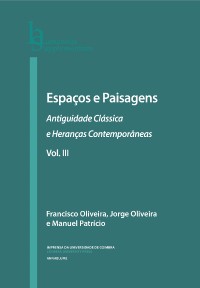Please use this identifier to cite or link to this item:
https://hdl.handle.net/10316.2/31565| Title: | Sinais de uma Cultura da Monumentalidade: as formas clássicas na arquitectura programática alentejana dos Sécs. XVI-XVII | Authors: | Patrocínio, Manuel F. S. do | Keywords: | Alentejo;Architectural forms;Architecture treatises;Modern Classicism;Portuguese ‘Plain-Style’;Alentejo;Classicismo moderno;«Estilo-Chão»;Formas arquitectónicas;Tratadística de arquitectura | Issue Date: | 2012 | Publisher: | Imprensa da Universidade de Coimbra Associação Portuguesa de Estudos Clássicos Centro de Estudos Clássicos e Humanísticos |
Journal: | http://hdl.handle.net/10316.2/2376 | Abstract: | All over the major constructive cycles that took place in Portuguese late 16th. and late 17th. Centuries, architectural treatises were the main obvious influence, giving origin both to the Mannerism and the so-called «Plain Style» local programmes and, later, at the birth of the 1st Baroque in Portuguese arts. Vitruvian inspiration and, mostly, the lesson of Sebastiano Serlio brought to Portuguese creators the means to a new visual understatement which, nonetheless, conveyed the conceptual language of Classicism. The sense of order, ratio and reasoning was well suited to the constructive spirit of such times, having resulted in most distinctive works even in contexts of smaller scale, as in the case of accomplishments currently under survey as significant Heritage examples in the Évora territory, where they remain as signs of a longstanding tradition based on Classical formulae and aesthetics. | URI: | https://hdl.handle.net/10316.2/31565 | ISBN: | 978-989-26-0292-9 (PDF) | DOI: | 10.14195/978-989-8281-69-2_21 | Rights: | open access |
| Appears in Collections: | Espaços e paisagens: antiguidade clássica e heranças contemporâneas: Vol.3 História, Arqueologia e Arte |
Files in This Item:
| File | Description | Size | Format | |
|---|---|---|---|---|
| 21-_espa_os_e_paisagens.pdf | 4.04 MB | Adobe PDF |  |
Items in DSpace are protected by copyright, with all rights reserved, unless otherwise indicated.
